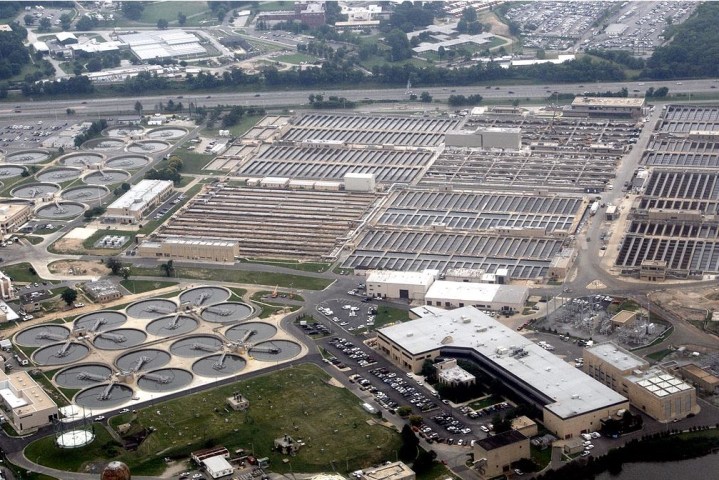
Wastewater and raw sewage are treated at the facility with safety in mind. The cleaned-up water is released into the Potomac River or Chesapeake Bay, while the biosolids are collected for recycling. Most of the solid waste is turned into compost or fertilizer, but a new initiative started earlier this year is diverting some the solids collected from the bottom of the water treatment pools into energy generation.
In a first for the U.S., the Blue Plains facility is using a sludge treatment process called Norwegian thermal hydrolysis, which maximizes the amount of biogas produced from the digestion of sludge. The hydrolysis process relies on bacteria to break down the organic waste in 80-foot-tall vats capable of decomposing up to 3.8 million gallons of biosolids. The byproduct of this digestion is methane, which then is used to generate 13 megawatts of electricity using turbines. Of the energy that is produced, 3 megawatts are used for the hydrolysis while the remaining 10 megawatts are piped back into the plant to meet its power needs.
Not only does this process remove solids from the waste stream, it also reduces the plant’s carbon footprint and saves the facility millions in energy costs. “It saves us money, avoids us having to buy power off the grid, which largely comes from coal,” said DC Water’s chief executive, George Hawkins. DC Water inaugurated the new $470 million facility earlier this year. The cost of building the cutting edge facility was financed primarily by consumer water bills.



